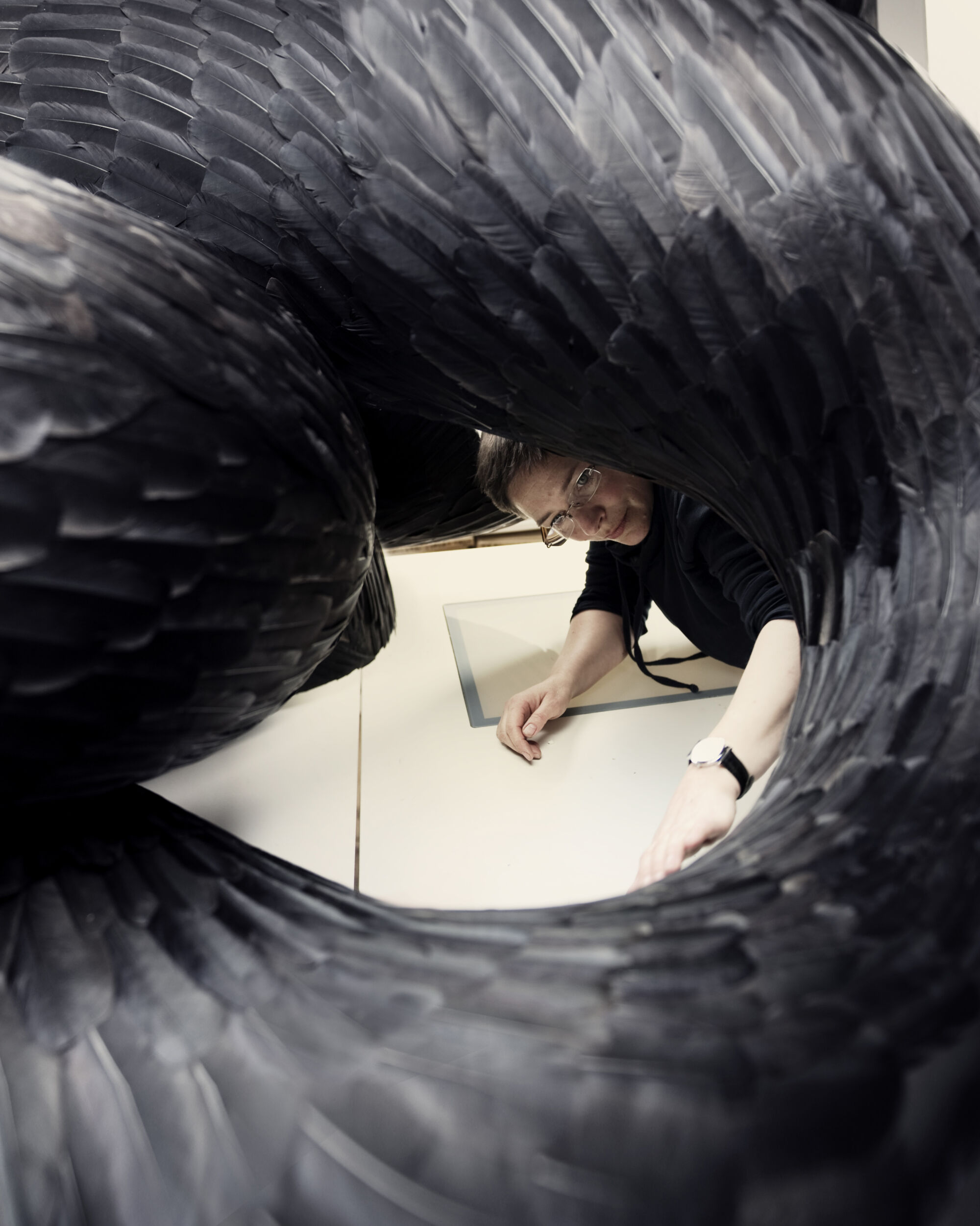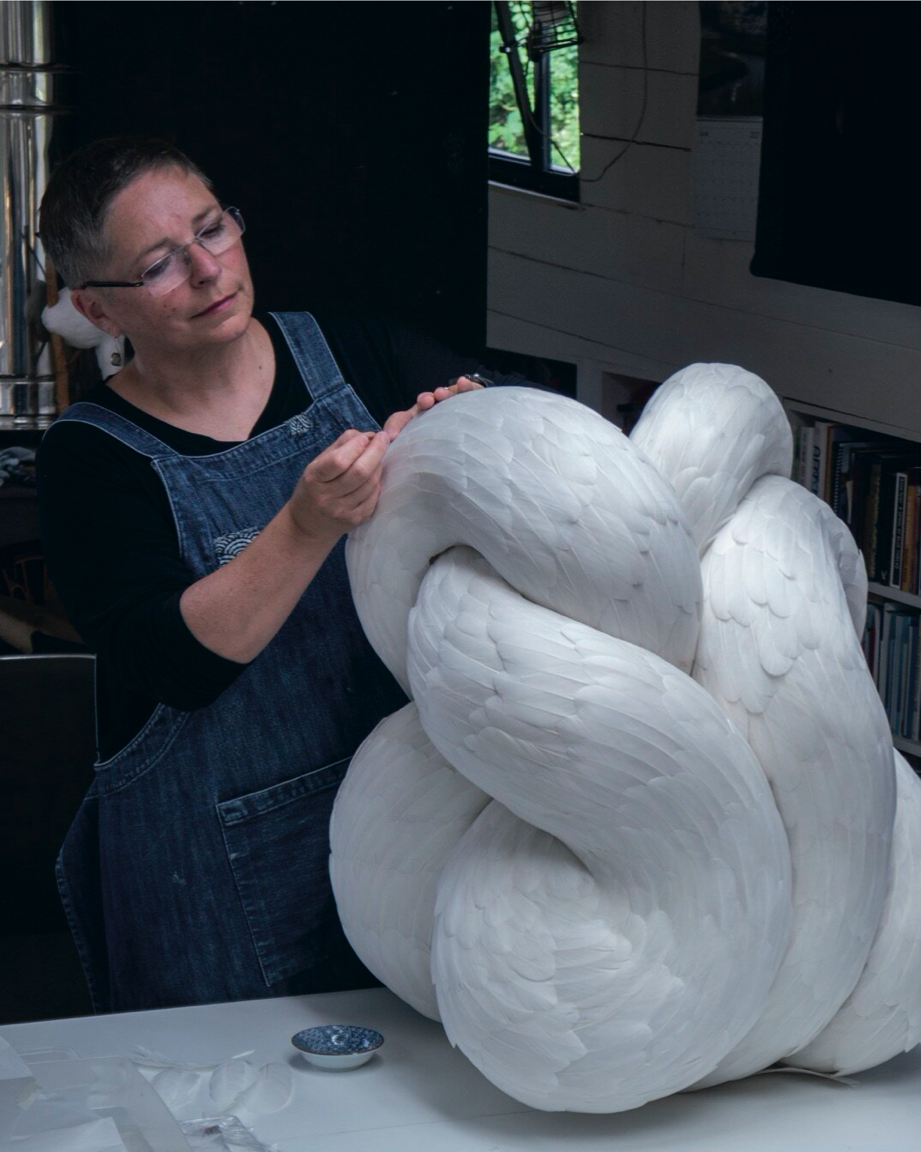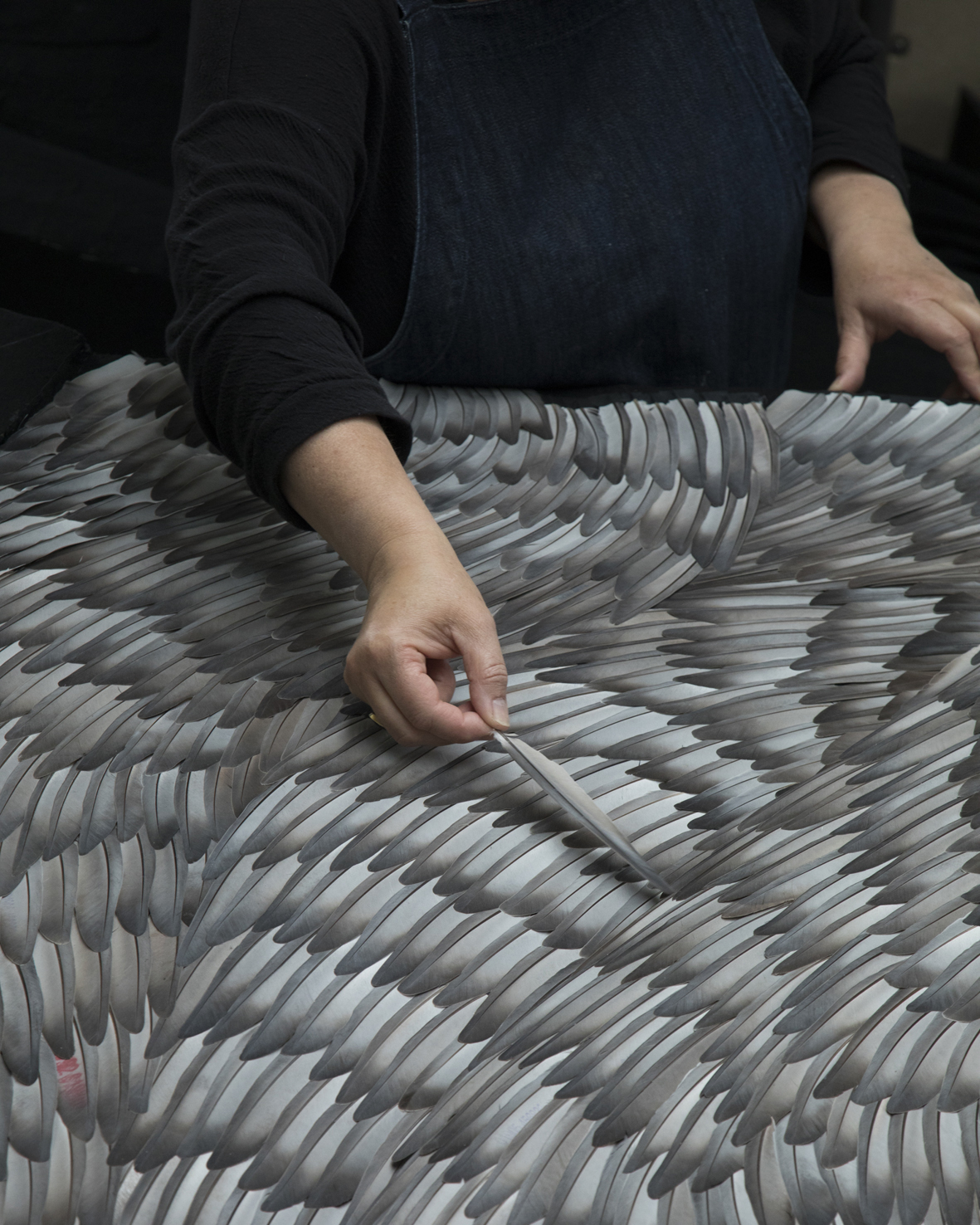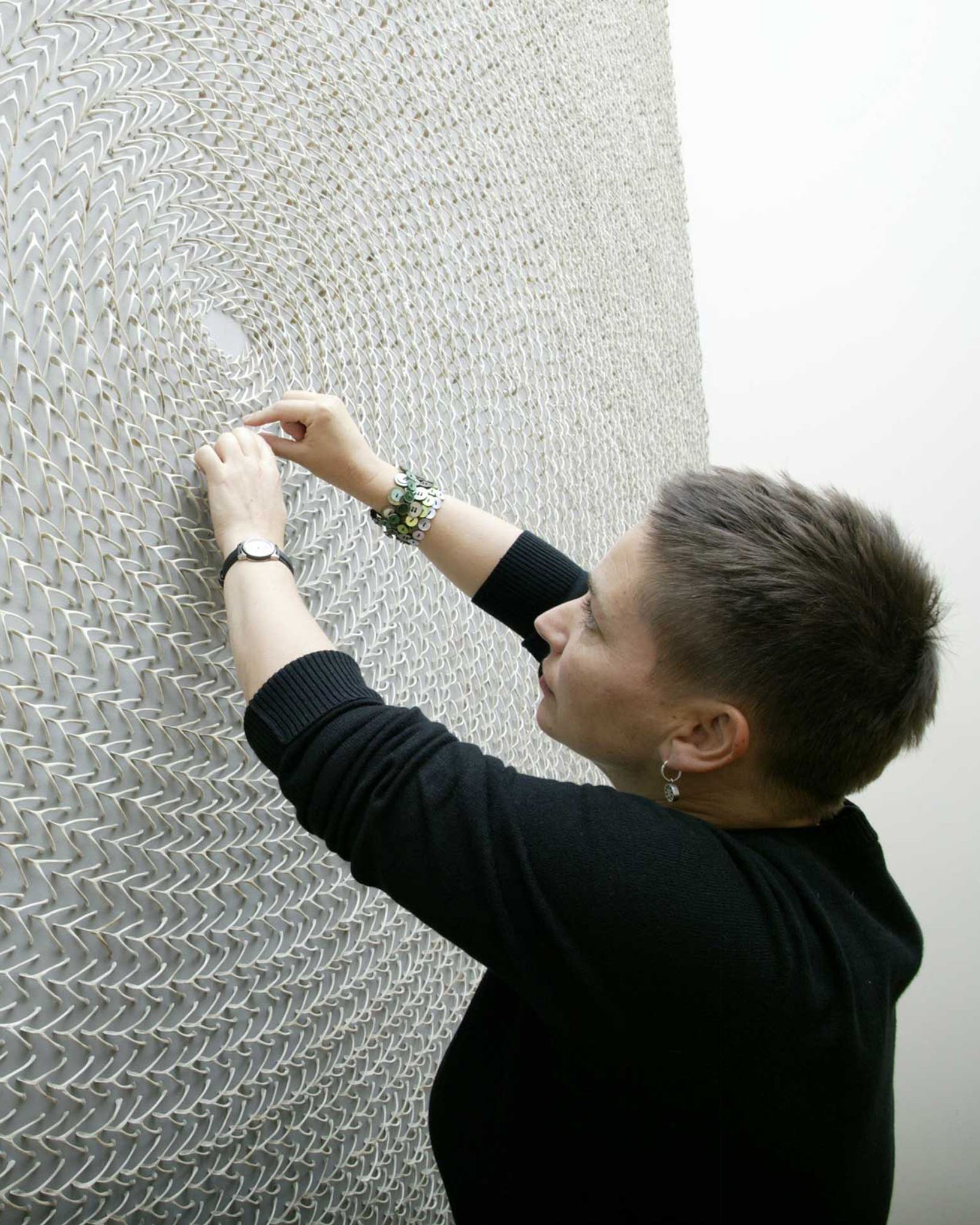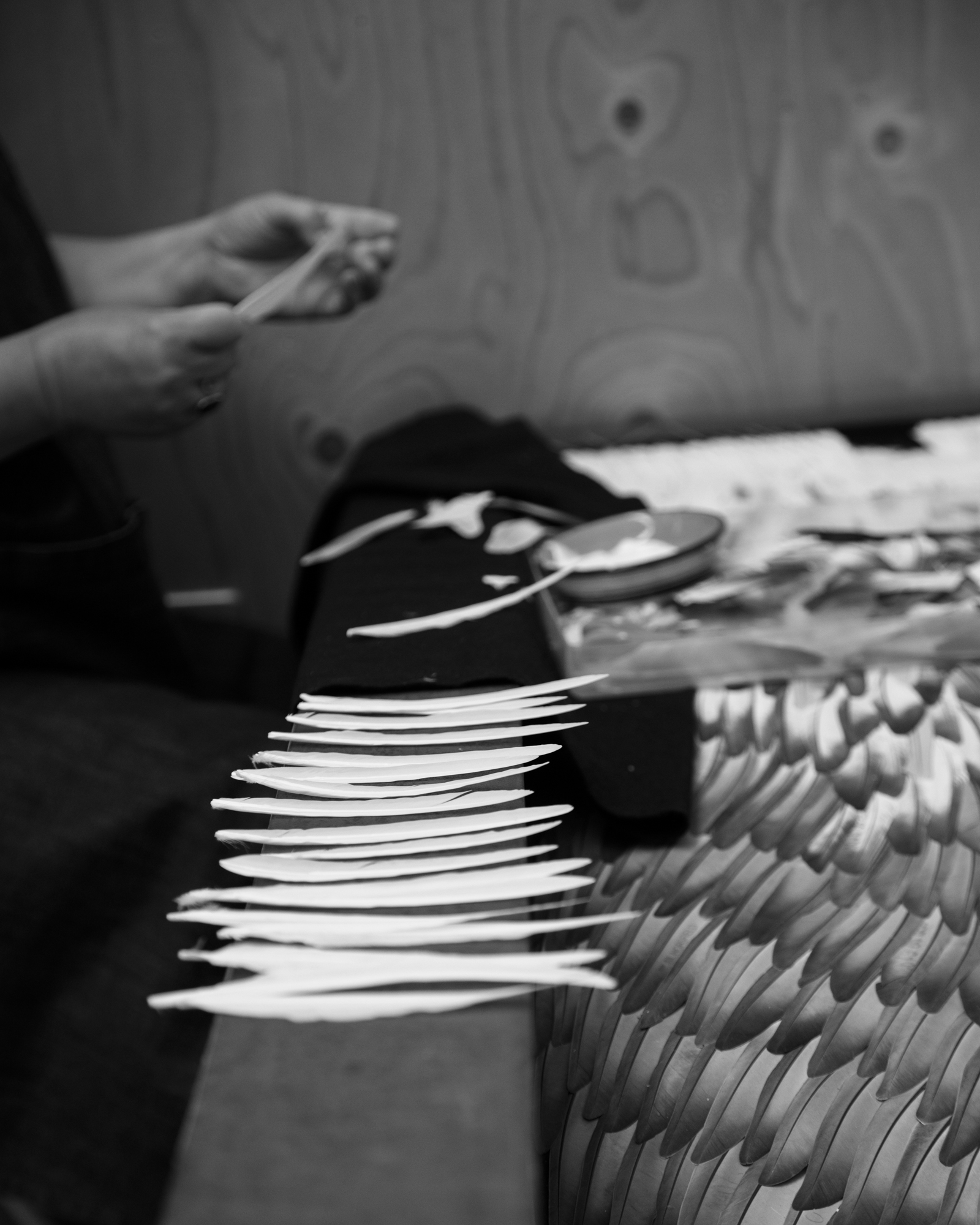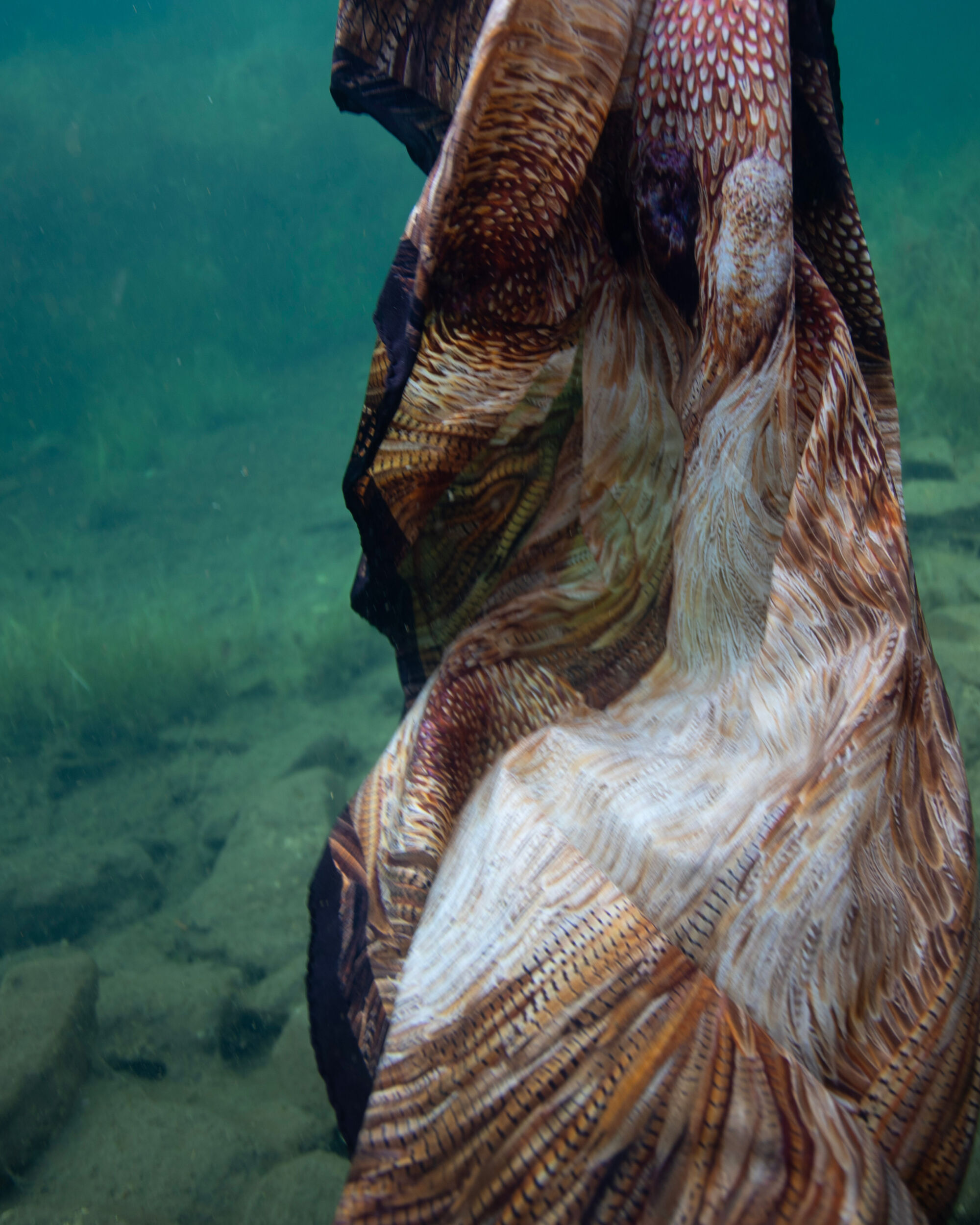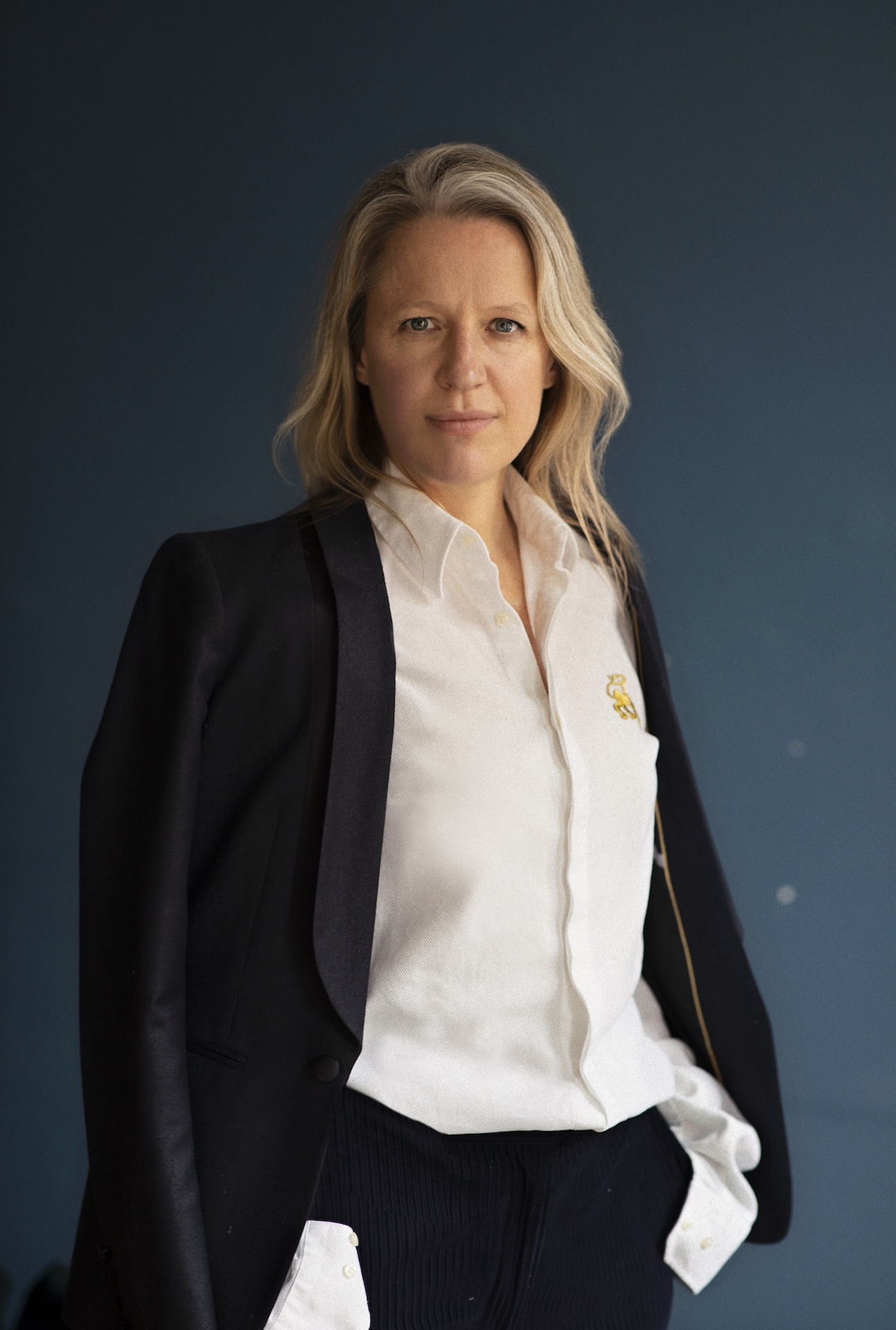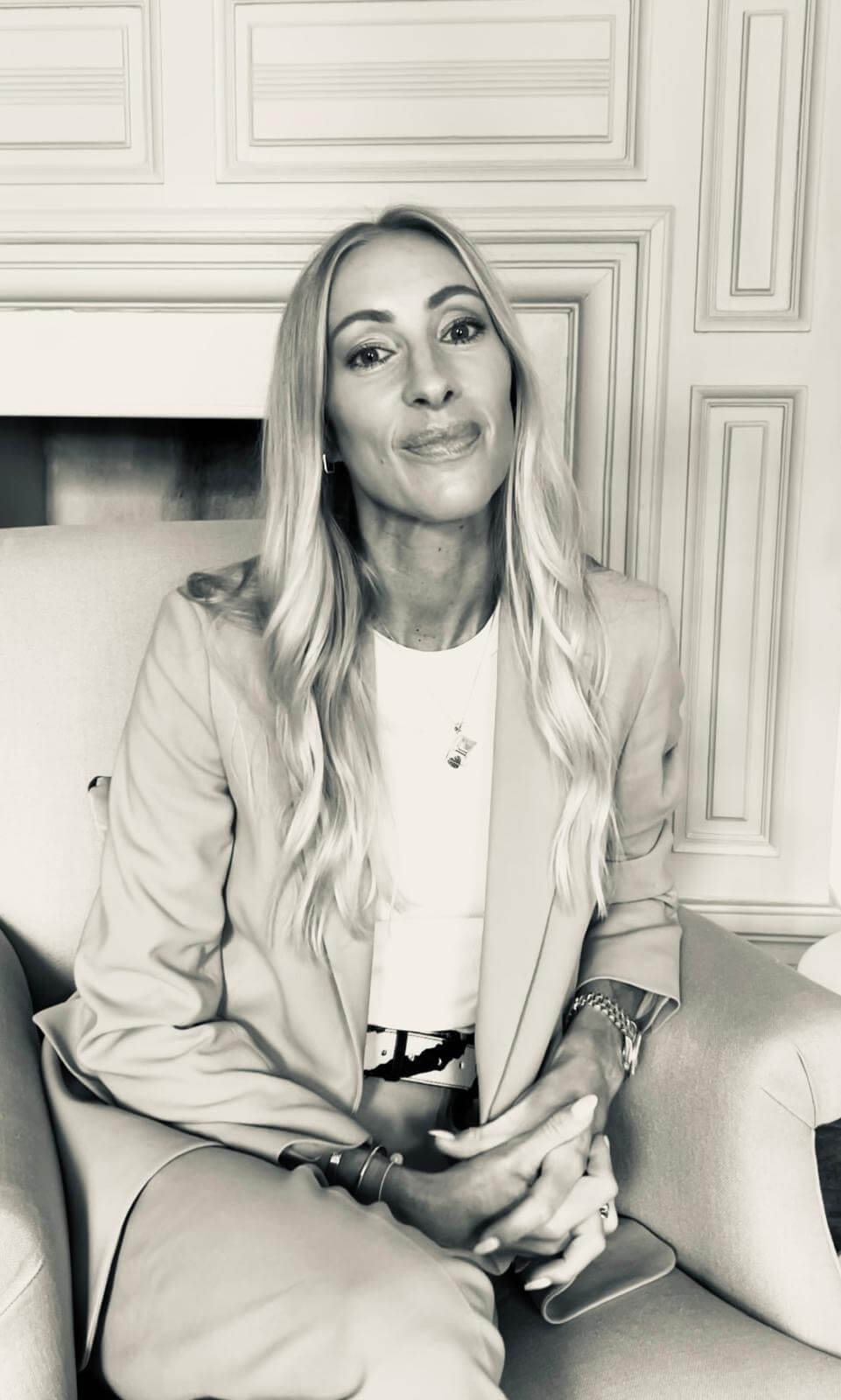

Interview Artist Kate MccGwire
MccGwire has had solo exhibitions everywhere from London and Leeds to South Korea, and this autumn, you can wear a piece of her work, thanks to her scarf collaboration with Co-Lab369. She talks to The Wick about the magic of feathers, feral pigeons and dips in the River Thames.
THE WICK: Tell us about your typical Monday.
Kate MccGwire: My winter regime… I wake up around 6am, do some yoga and have a cup of tea in the studio until it gets light, then I walk just a few steps down the garden to the banks of the River Thames and take my daily swim. It’s a bracing and invigorating challenge and I get to immerse myself fully in the nature around my studio. If I’m lucky, I get to see our resident kingfisher as well.
TW: Feathers are a mainstay in your work. What first drew you to them?
KM: After graduating from the Royal College of Art with an MA in Sculpture in 2004, I was looking for a studio and found a beautiful 100-year-old Dutch Barge moored on a semi dilapidated island on the Thames at Hampton. I had spent my formative years messing around in boats so it felt completely natural to use this spacious barge as my studio. I revelled in the dishevelled nature of this island and the large, rundown warehouses populated by feral pigeons. Each day I would find feathers lying on the ground. At the RCA I’d been making work with hair so moving to feathers seemed natural as they are also made of keratin.
TW: Is there a specific place or object that you turn to when you’re in need of inspiration?
KM: Any form of water – the sea, rivers, a stream. If I can swim in it, all the better.
TW: Your sculptures have a muscularity to them – often appearing to writhe within their glass containers or wriggle their way out of fireplaces and hearths. They also seduce and repulse in equal measure. Why imbue them with this tension?
KM: My work always has this tension. It’s imperative to me that the work isn’t viewed as merely beautiful, although the element of seduction is important in order to lull the viewer into their comfort zone and then lead them into confusion with the writhing yet familiar forms that are both animal and often vaguely sexual.
“Feathers are incredible things – they offer warmth and protection, they provide flight and an escape, but they can also be key when catching the eye of a mate.”
